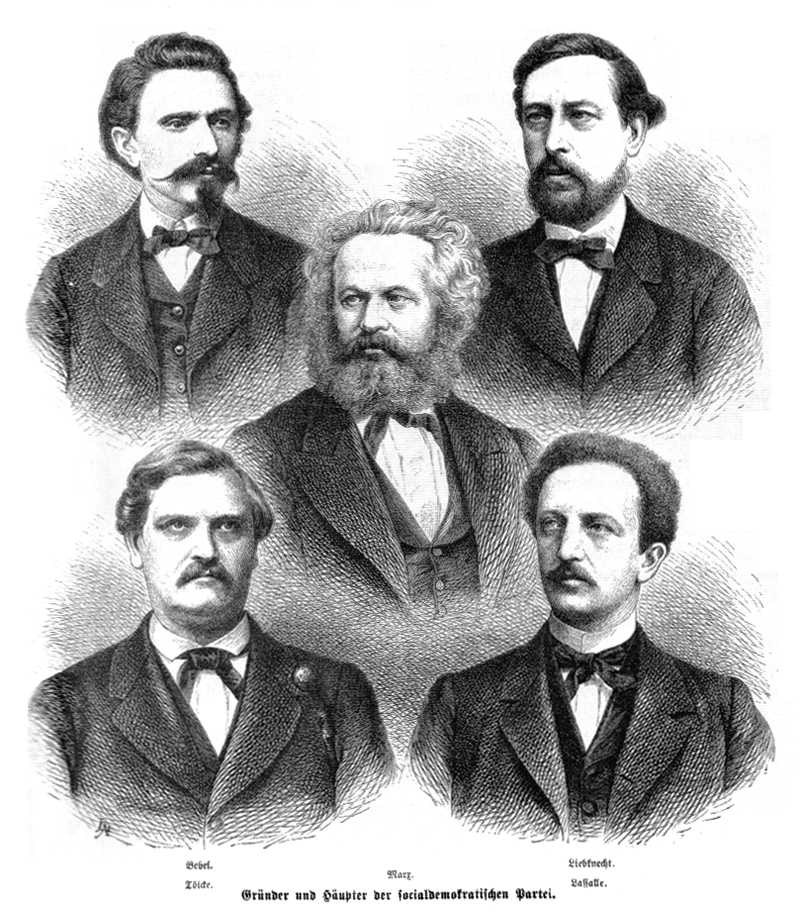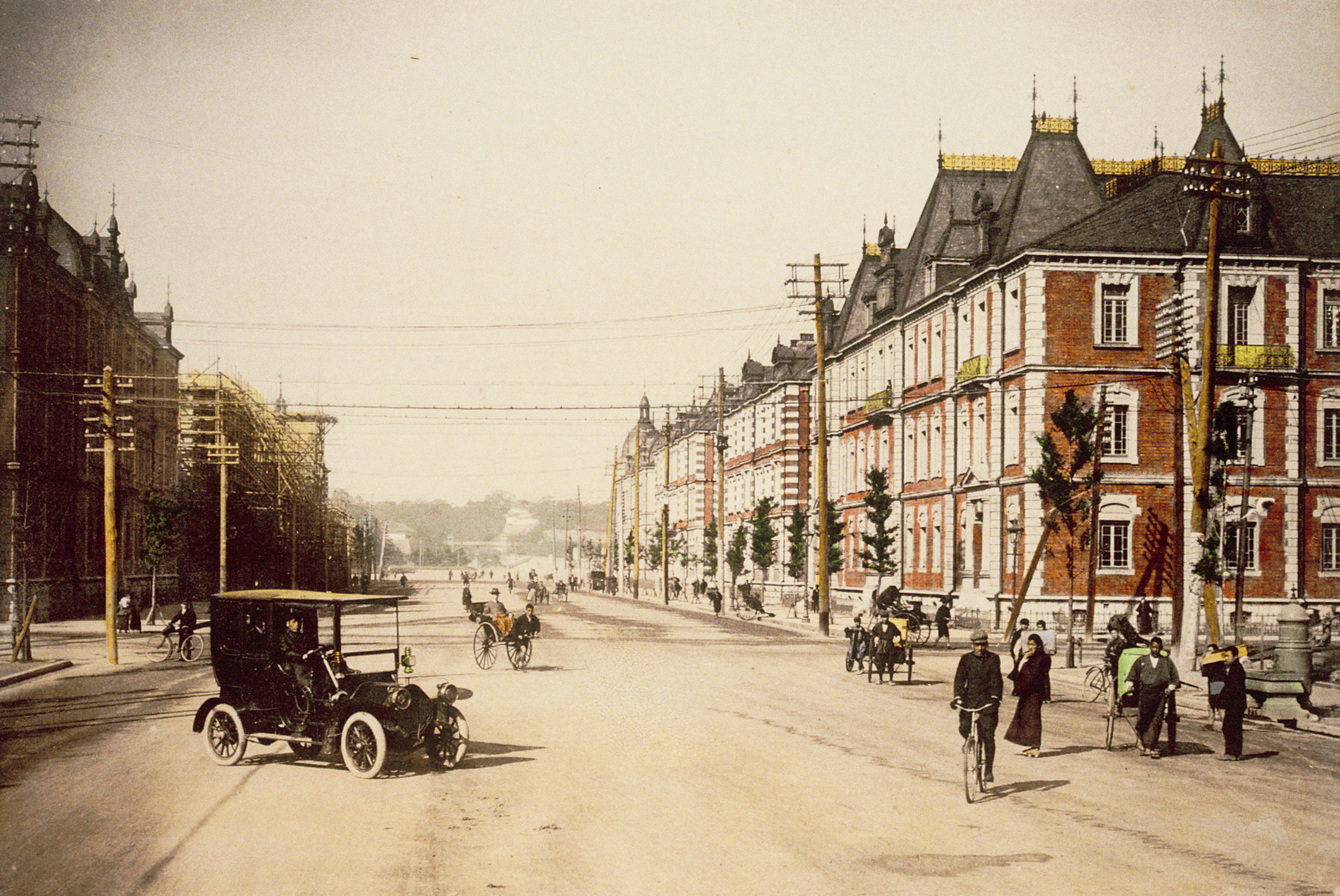|
Shakai Taishūtō
The was a moderate leftist political party in early Shōwa period Empire of Japan. The ''Shakai Taishūtō'' was founded by Abe Isoo in July 1932, as a merger of the '' Shakai Minshūtō'' (Socialist Mass Party) with the '' Zenkoku Rōnō Taishūtō'' (National Labour-Farmer Mass Party). In a period of increasing extremism in politics, the new party attempted to maintain a middle-of-the road approach which inevitably resulted in a confused policy. On one hand, the ''Shakai Taishūtō'' supported agrarian reform and pushed for improvement in the lot of the farmers by cutting the military budget; on the other hand, it cultivated ties with the ''Tōseiha'' political faction within the Imperial Japanese Army, and supported Japanese aggression in Manchuria. The ''Shakai Taishūtō'' advocated increased international cooperation and opposed Japan's withdraw from the League of Nations, but at the same time supported the invasion of China in 1937. It was the only leftist party allowed ... [...More Info...] [...Related Items...] OR: [Wikipedia] [Google] [Baidu] |
Abe Isoo
was a Japanese Christian socialist, parliamentarian and pacifist. He largely contributed to development of baseball in Japan, and was called "Father of Japanese baseball." He created a baseball club of Waseda University. Early life and education Abe was born in Fukuoka on 4 February 1865. He entered at Doshisha University in 1879, and got baptized by Joseph Hardy Neesima at February 2, 1882. In 1898, he created the first Consumers' co-operative of university in Japan at Doshisha. After he graduated from Doshissha, he studied abroad, including at the University of Berlin, before attending Hartford Theological Seminary in Hartford, Connecticut. It was while he was studying in Hartford that he became interested in socialism. Career After returning to Japan, in 1899, Abe became a Unitarian preacher. He taught at the Waseda University starting in 1901, called Tokyo Semmon Gakko, at the time. He later became a faculty of political science and economics and taught there for 25 ye ... [...More Info...] [...Related Items...] OR: [Wikipedia] [Google] [Baidu] |
Nazism
Nazism ( ; german: Nazismus), the common name in English for National Socialism (german: Nationalsozialismus, ), is the far-right totalitarian political ideology and practices associated with Adolf Hitler and the Nazi Party (NSDAP) in Nazi Germany. During Hitler's rise to power in 1930s Europe, it was frequently referred to as Hitlerism (german: Hitlerfaschismus). The later related term "neo-Nazism" is applied to other far-right groups with similar ideas which formed after the Second World War. Nazism is a form of fascism, with disdain for liberal democracy and the parliamentary system. It incorporates a dictatorship, fervent antisemitism, anti-communism, scientific racism, and the use of eugenics into its creed. Its extreme nationalism originated in pan-Germanism and the ethno-nationalist '' Völkisch'' movement which had been a prominent aspect of German nationalism since the late 19th century, and it was strongly influenced by the paramilitary groups that emerged af ... [...More Info...] [...Related Items...] OR: [Wikipedia] [Google] [Baidu] |
Social Democracy
Social democracy is a Political philosophy, political, Social philosophy, social, and economic philosophy within socialism that supports Democracy, political and economic democracy. As a policy regime, it is described by academics as advocating Economic interventionism, economic and social interventions to promote social justice within the framework of a liberal-democratic polity and a capitalist-oriented mixed economy. The protocols and norms used to accomplish this involve a commitment to Representative democracy, representative and participatory democracy, measures for income redistribution, regulation of the economy in the Common good, general interest, and social welfare provisions. Due to longstanding governance by social democratic parties during the post-war consensus and their influence on socioeconomic policy in Northern and Western Europe, social democracy became associated with Keynesianism, the Nordic model, the social-liberal paradigm, and welfare states within po ... [...More Info...] [...Related Items...] OR: [Wikipedia] [Google] [Baidu] |
Zaibatsu
is a Japanese language, Japanese term referring to industrial and financial vertical integration, vertically integrated business conglomerate (company), conglomerates in the Empire of Japan, whose influence and size allowed control over significant parts of the Japanese economy from the Meiji period until the end of World War II. A ''zaibatsu'' general structure included a family-owned holding company on top, and a bank which financed the other, mostly industrial subsidiaries within them. Although the ''zaibatsu'' played an important role in the Japanese economy from the 1860s to 1945, they increased in number and importance following the Russo-Japanese War of 1904–1905, World War I and Japan's subsequent attempt to conquer East Asia during the inter-war period and World War II. After World War II they were dissolved by the Occupation of Japan, Allied occupation forces and succeeded by the ''keiretsu'' (groups of banks, manufacturers, suppliers, and distributors). Equivalents ... [...More Info...] [...Related Items...] OR: [Wikipedia] [Google] [Baidu] |
Middle Class
The middle class refers to a class of people in the middle of a social hierarchy, often defined by occupation, income, education, or social status. The term has historically been associated with modernity, capitalism and political debate. Common definitions for the middle class range from the middle fifth of individuals on a nation's income ladder, to everyone but the poorest and wealthiest 20%. Theories like "Paradox of Interest" use decile groups and wealth distribution data to determine the size and wealth share of the middle class. From a Marxist standpoint, middle class initially referred to the 'bourgeoisie,' as distinct from nobility. With the development of capitalist societies and further inclusion of the bourgeoisie into the ruling class, middle class has been more closely identified by Marxist scholars with the term 'petite bourgeoisie.' There has been significant global middle-class growth over time. In February 2009, ''The Economist'' asserted that over half of the ... [...More Info...] [...Related Items...] OR: [Wikipedia] [Google] [Baidu] |
1937 Japanese General Election
General elections were held in Japan on 31 March 1937. Rikken Minseitō emerged as the largest in Parliament, with 179 of the 466 seats. The election was a major victory for the Shakai Taishūtō, which became the third-largest party in the Diet. It was the first socialist party to do so in Japanese history. In contrast, the mildly pro-military Rikken Minseitō lost several seats and fascist groups such as Tōhōkai remained minor forces in the House. A month after the election, the Emperor replaced Hayashi with Fumimaro Konoe. Voter turnout was 73.3%. Background In February 1937, General was appointed prime mini ...[...More Info...] [...Related Items...] OR: [Wikipedia] [Google] [Baidu] |
Diet Of Japan
The is the national legislature of Japan. It is composed of a lower house, called the House of Representatives (, ''Shūgiin''), and an upper house, the House of Councillors (, '' Sangiin''). Both houses are directly elected under a parallel voting system. In addition to passing laws, the Diet is formally responsible for nominating the Prime Minister. The Diet was first established as the Imperial Diet in 1890 under the Meiji Constitution, and took its current form in 1947 upon the adoption of the post-war constitution. Both houses meet in the in Nagatachō, Chiyoda, Tokyo. Composition The houses of the National Diet are both elected under parallel voting systems. This means that the seats to be filled in any given election are divided into two groups, each elected by a different method; the main difference between the houses is in the sizes of the two groups and how they are elected. Voters are also asked to cast two votes: one for an individual candidate in a const ... [...More Info...] [...Related Items...] OR: [Wikipedia] [Google] [Baidu] |
House Of Representatives Of Japan
The is the lower house of the National Diet of Japan. The House of Councillors (Japan), House of Councillors is the upper house. The composition of the House is established by and of the Constitution of Japan. The House of Representatives has 465 members, elected for a four-year term. Of these, 176 members are elected from 11 multi-member constituencies by a party-list system of proportional representation, and 289 are elected from single-member constituencies. The overall voting system used to elect the House of Representatives is a Parallel voting, parallel system, a form of semi-proportional representation. Under a parallel system the allocation of list seats does not take into account the outcome in the single seat constituencies. Therefore, the overall allocation of seats in the House of Representatives is not proportional, to the advantage of larger parties. In contrast, in bodies such as the German ''Bundestag'' or the New Zealand Parliament the election of single-seat ... [...More Info...] [...Related Items...] OR: [Wikipedia] [Google] [Baidu] |
Second Sino-Japanese War
The Second Sino-Japanese War (1937–1945) or War of Resistance (Chinese term) was a military conflict that was primarily waged between the Republic of China and the Empire of Japan. The war made up the Chinese theater of the wider Pacific Theater of the Second World War. The beginning of the war is conventionally dated to the Marco Polo Bridge Incident on 7 July 1937, when a dispute between Japanese and Chinese troops in Peking escalated into a full-scale invasion. Some Chinese historians believe that the Japanese invasion of Manchuria on 18 September 1931 marks the start of the war. This full-scale war between the Chinese and the Empire of Japan is often regarded as the beginning of World War II in Asia. China fought Japan with aid from Nazi Germany, the Soviet Union, United Kingdom and the United States. After the Japanese attacks on Malaya and Pearl Harbor in 1941, the war merged with other conflicts which are generally categorized under those conflicts of World War II a ... [...More Info...] [...Related Items...] OR: [Wikipedia] [Google] [Baidu] |
League Of Nations
The League of Nations (french: link=no, Société des Nations ) was the first worldwide intergovernmental organisation whose principal mission was to maintain world peace. It was founded on 10 January 1920 by the Paris Peace Conference that ended the First World War. The main organization ceased operations on 20 April 1946 but many of its components were relocated into the new United Nations. The League's primary goals were stated in its Covenant. They included preventing wars through collective security and disarmament and settling international disputes through negotiation and arbitration. Its other concerns included labour conditions, just treatment of native inhabitants, human and drug trafficking, the arms trade, global health, prisoners of war, and protection of minorities in Europe. The Covenant of the League of Nations was signed on 28 June 1919 as Part I of the Treaty of Versailles, and it became effective together with the rest of the Treaty on 10 January 1920. T ... [...More Info...] [...Related Items...] OR: [Wikipedia] [Google] [Baidu] |
Manchuria
Manchuria is an exonym (derived from the endo demonym " Manchu") for a historical and geographic region in Northeast Asia encompassing the entirety of present-day Northeast China (Inner Manchuria) and parts of the Russian Far East (Outer Manchuria). Its meaning may vary depending on the context: * Historical polities and geographical regions usually referred to as Manchuria: ** The Later Jin (1616–1636), the Manchu-led dynasty which renamed itself from "Jin" to "Qing", and the ethnicity from "Jurchen" to "Manchu" in 1636 ** the subsequent duration of the Qing dynasty prior to its conquest of China proper (1644) ** the northeastern region of Qing dynasty China, the homeland of Manchus, known as "Guandong" or "Guanwai" during the Qing dynasty ** The region of Northeast Asia that served as the historical homeland of the Jurchens and later their descendants Manchus ***Qing control of Dauria (the region north of the Amur River, but in its watershed) was contested in 1643 when ... [...More Info...] [...Related Items...] OR: [Wikipedia] [Google] [Baidu] |






